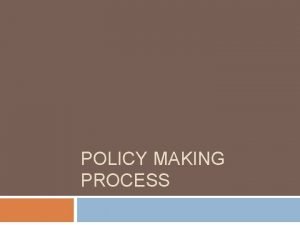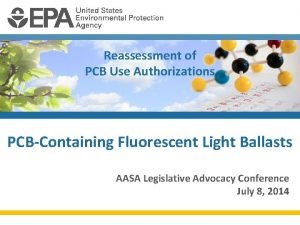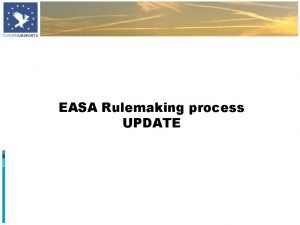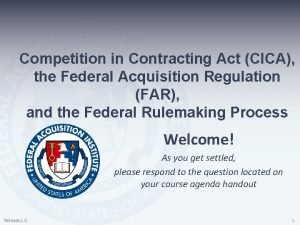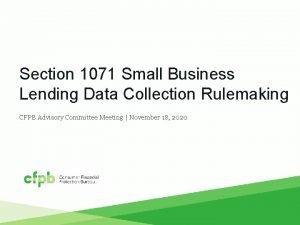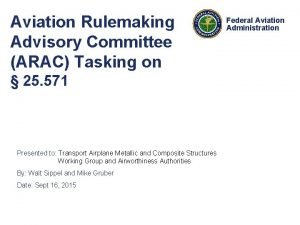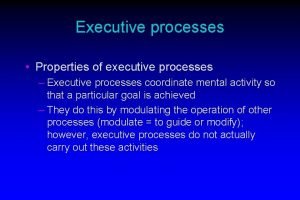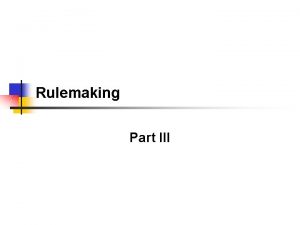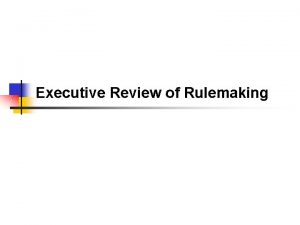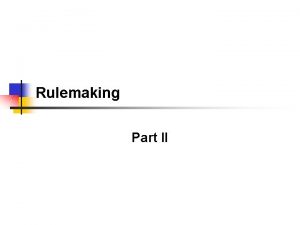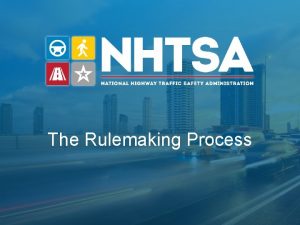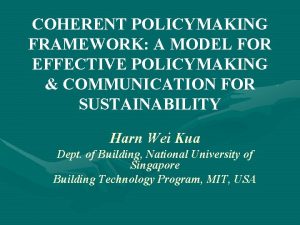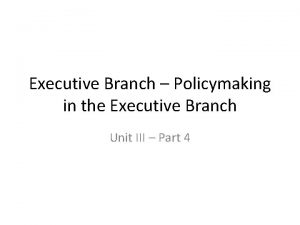The Rulemaking Process Rulemaking Policymaking process for Executive








- Slides: 8

The Rulemaking Process

Rulemaking • Policy-making process for Executive and Independent agencies of the Federal government. • Rules also referred to as “regulations. ” • The process is governed by the Administrative Procedure Act (APA) (5 U. S. C. Chapter 5) and can lead to a new Rule, an amendment to an existing Rule, or the repeal of an existing Rule. Executive Orders 12866, 13563, and 13579 also establish principles and guidance for the rulemaking process.

Overview of the Rulemaking Process 3

• Agency cannot issue a Rule unless granted authority to do so by law. • Before rulemaking process, agency evaluates possible alternatives to a rulemaking. – Economic analyses (cost-benefit analyses, regulatory impact analyses, or regulatory evaluations). – Publish “Advanced Notice of Proposed Rulemaking” to solicit public comments to determine if rulemaking should be initiated. 4

• Notice of Proposed Rulemaking published in the Federal Register. • Agencies accept public comments via Regulations. gov. Typically, an agency will allow 60 days for public comment. • The rulemaking docket contains all of an agency’s relevant – rulemaking materials (e. g. , NPRM, hearing Notices, extensions of comment period, and Final Rule), – supporting documents (e. g. , economic and environmental analyses), – other references, all public comments, and other relevant documents. • The public docket for agency rulemakings is at Regulations. gov. 5

• After the comment period closes, agency: – reviews all comments received and conducts a comment analysis. – decides whether to proceed with the rulemaking process or issue a new or modified proposal. • Final Rule must include preamble and Rule text. – The preamble includes a response to the significant, relevant issues raised in public comments and a statement providing the basis and the purpose of the Rule. The Final Rule published in the Federal Register. Typically, Final Rule becomes effective in no less than 30 days of its publication, . 6

• Some rulemakings are designated as Long. Term actions, indicating regulatory development is pending. • Such rulemakings are not expected to result in either additional regulatory actions over the subsequent 12 months or after a specified month and year. 7

• A rulemaking designated as a Completed action is the result of a regulatory action which has been withdrawn by an agency since the publication of the preceding edition of the Regulatory Agenda. • Additionally, a Completed action indicates that it is no longer being considered by the agency. • Complete map of process available at: www. reginfo. gov/public/reginfo/Regmap/index. jsp 8
